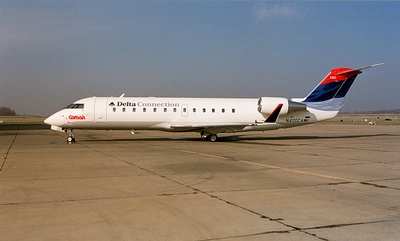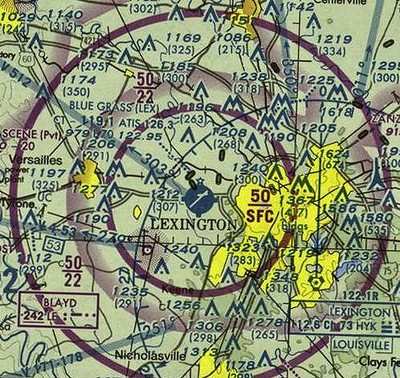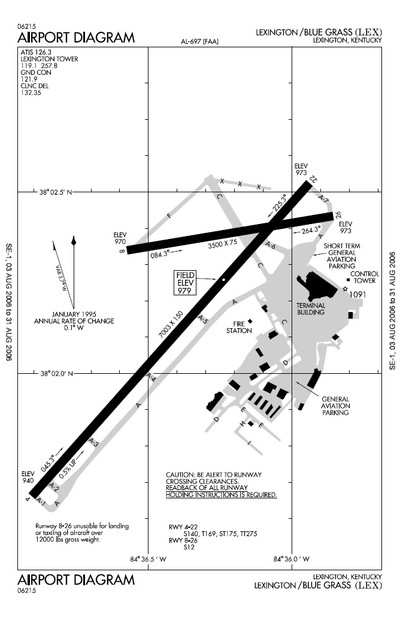Agency Says Accident Caused By Numerous Errors
 After
offering the families of those who perished in the Comair Flight
5191 accident last year, the National Transportation Safety Board
announced its findings on the 11-month investigating into what went
wrong in the early morning hours of August 27, 2006.
After
offering the families of those who perished in the Comair Flight
5191 accident last year, the National Transportation Safety Board
announced its findings on the 11-month investigating into what went
wrong in the early morning hours of August 27, 2006.
Comair Flight 5191 mistakenly took off from a too-short
runway at Blue Grass Airport in Lexington, KY in an
accident that killed 49 of 50 people on board.
The Louisville Courier-Journal reported the final draft focused
on the behaviors of the pilot, first officer and controller.
"This accident has led us into the briar patch of human
behavior," said NTSB board member Debbie Hersman. "No simple cause.
No single solution. No 'aha' moment."
From what the NTSB has made public, several issues figure in to
the final outcome.
"I don't see one overriding factor," said John Nance, author and
aviation analyst for ABC World News. "There are always probable
causes."
Among several reported errors made by pilot Capt. Jeffrey Clay
and First Officer James Polehinke (the sole survivor) was 40
seconds of conversation that was said to be in violation of FAA
regulations, according to USA Today.
NTSB transcripts of that conversation between Clay and Polehinke
were about schedules, families, a pet and another pilot just before
takeoff.
According to the carrier, this kind of conversation is in
violation of the "sterile cockpit" rule. The federal regulation
requires pilots to focus on the aircraft only, said Nance.
But, "would they have caught (their wrong location) if they had
been quiet and professionally focused? You can't say that," he
said.
The Air Line Pilots Association recently submitted statements to
the NTSB claiming airport signage did not match given diagrams and
charts and proper recorded notice to airmen information did not
include critical information such as the normal taxiway to the main
runway was closed due to construction, that the distance-remaining
lights on the main runway were out of service or that the runway
they were about to take off from was for daytime use only, as ANN reported.

The carrier agreed and added LEX had mismanaged a construction
project caused confusion that contributed to the crash.
LEX countered that line of reasoning saying the NTSB found in
December 2006 that appropriate signs were in place and the air
crew's inattention when they violated the "sterile cockpit" rule
caused the crash.
"This accident was caused by poor human performance," said NTSB
Chairman Mark V. Rosenker. "Forty-nine lives could have been
saved if the flightcrew had been concentrating on the important
task of operating the airplane in a safe manner."
Another factor presented was the fact there was only on
controller on duty at LEX that morning. The FAA admitted there was, indeed, one
controller instead of the required two.
That sole controller, Christopher Damron, initially told
investigators he watched the aircraft taxi to the correct runway
then changed his statement to say he had, in actuality, turned away
to do other job-related duties.

Some analysts have speculated the outcome of this situation
might have been very different had there been the required
controllers on duty that day, a claim FAA administrator has been
reported to Marion Blakey dispute.
"I want to emphasize, in case there is any doubt: This Lexington
controller did nothing wrong. He cleared the aircraft to the
correct runway and performed his duties by the book. Our bottom
line is this: We believe this terrible tragedy might well have been
prevented had there been a second controller in this facility on
this shift," said National Air Traffic Controllers Association
President Patrick Forrey.
"(The) NATCA's long-held position is there should NEVER be one
controller working by themselves. Ever. It is not safe, for the
controller or for the flying public."
"Really, the main thing we would like to see happen is that
(NTSB) recommendations are enforced," said Connie Fahey, mother of
Thomas Fahey, 26, who died in the accident. "Somebody needs to make
sure they follow through and do what needs to be done."

The probable cause reads: "The National Transportation Safety
Board today determined the probable cause of the Comair flight 5191
accident in Lexington, Kentucky was the flight crew's failure to
use available cues and aids to identify the airplane's location on
the airport surface during taxi and their failure to cross check
and verify that the airplane was on the correct runway before
takeoff. Contributing to this accident were the flight crew's
nonpertinent conversation during taxi, which resulted in loss of
positional awareness and the Federal Aviation Administration's
failure to require that all runway crossings be authorized only by
specific air traffic control clearances."
 Airbus Racer Helicopter Demonstrator First Flight Part of Clean Sky 2 Initiative
Airbus Racer Helicopter Demonstrator First Flight Part of Clean Sky 2 Initiative Diamond's Electric DA40 Finds Fans at Dübendorf
Diamond's Electric DA40 Finds Fans at Dübendorf ANN's Daily Aero-Term (04.23.24): Line Up And Wait (LUAW)
ANN's Daily Aero-Term (04.23.24): Line Up And Wait (LUAW) NTSB Final Report: Extra Flugzeugbau GMBH EA300/L
NTSB Final Report: Extra Flugzeugbau GMBH EA300/L Classic Aero-TV: 'Never Give Up' - Advice From Two of FedEx's Female Captains
Classic Aero-TV: 'Never Give Up' - Advice From Two of FedEx's Female Captains






